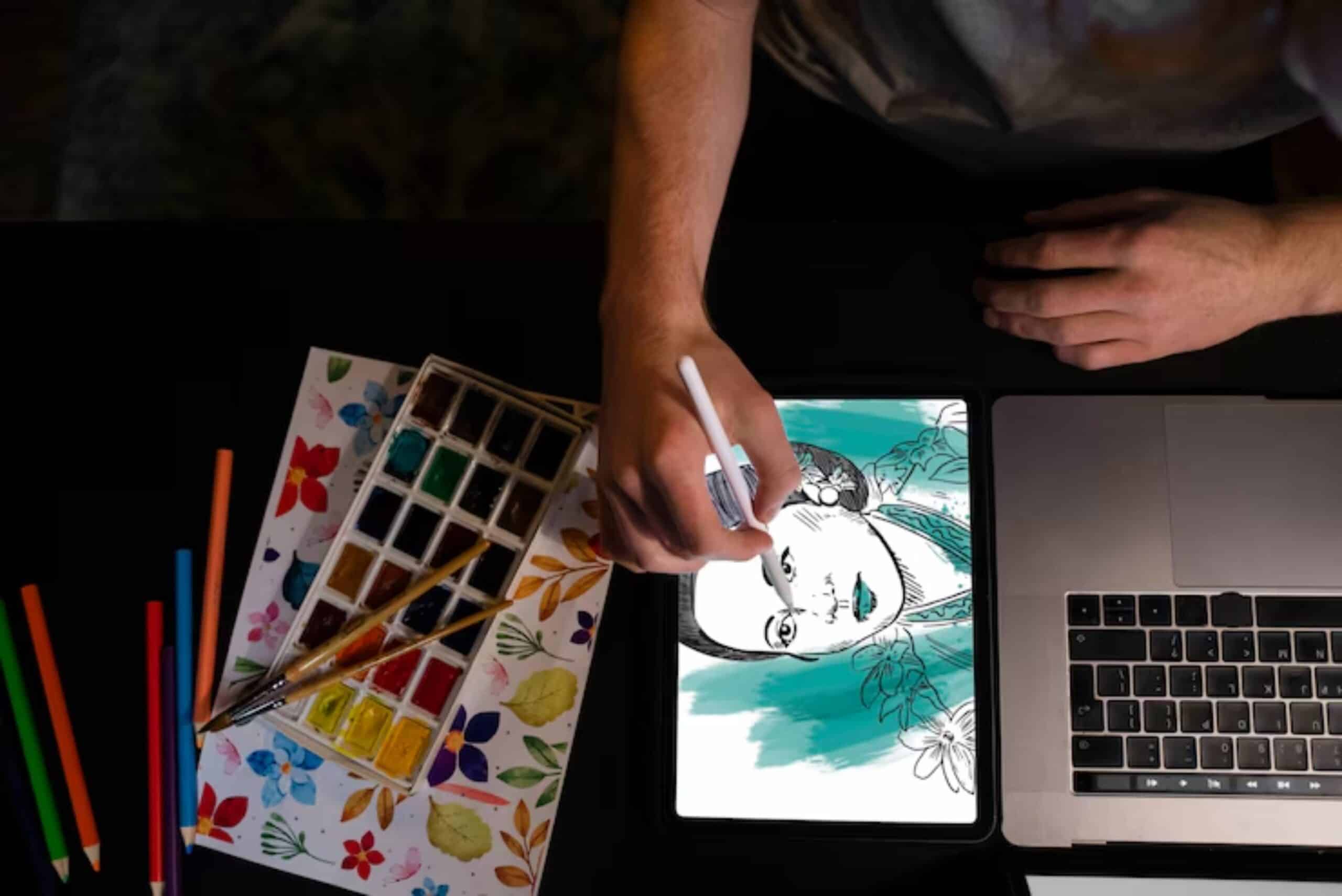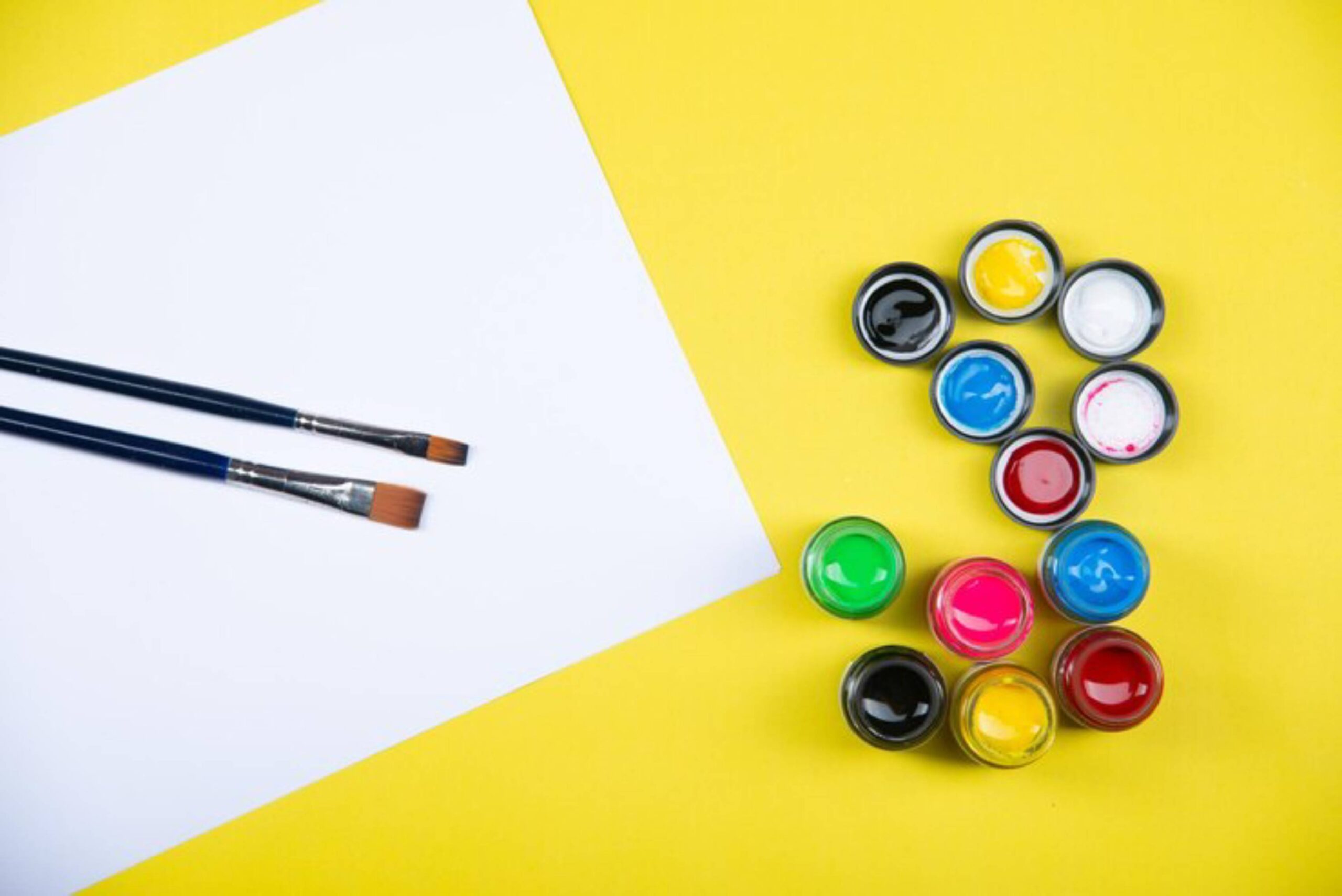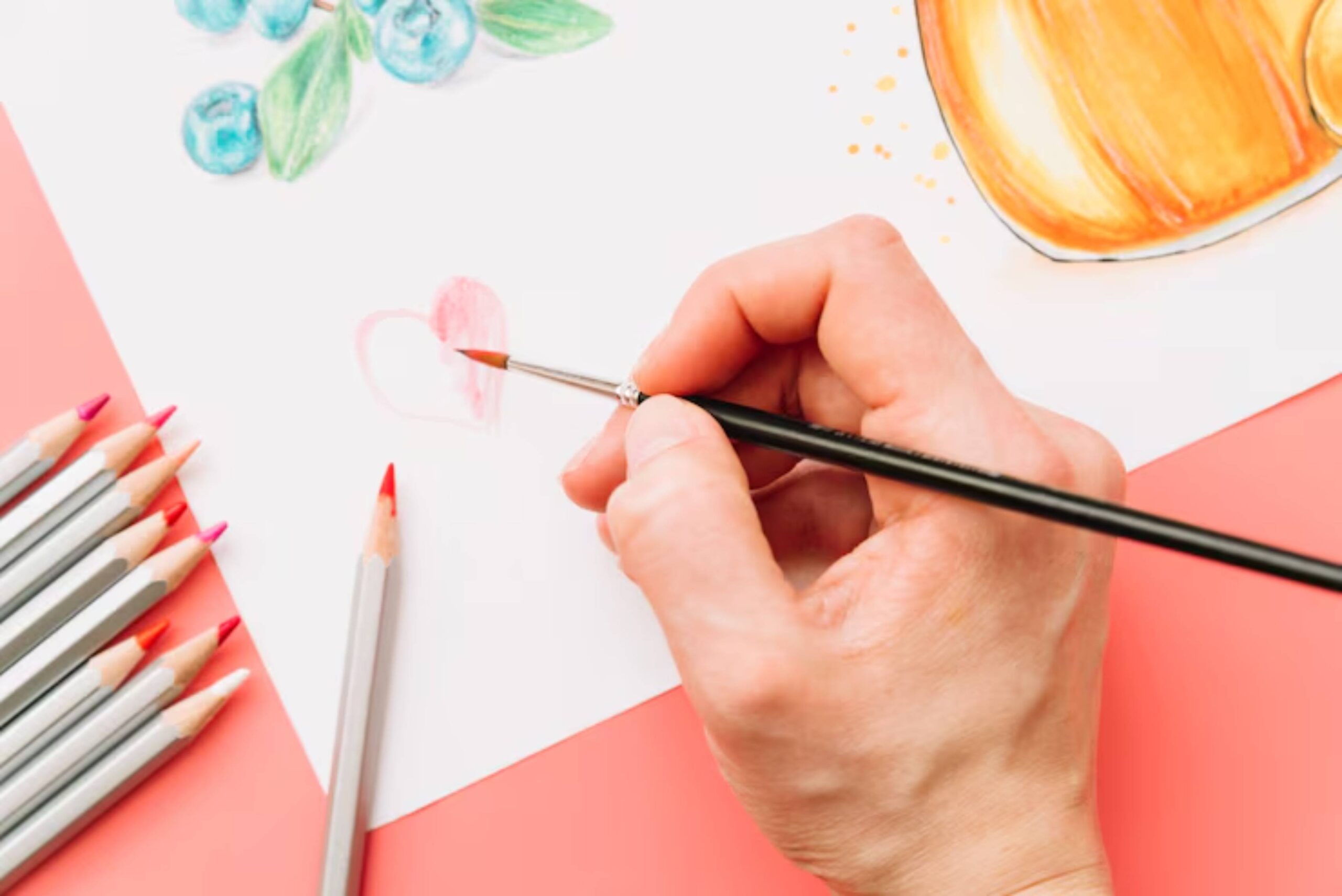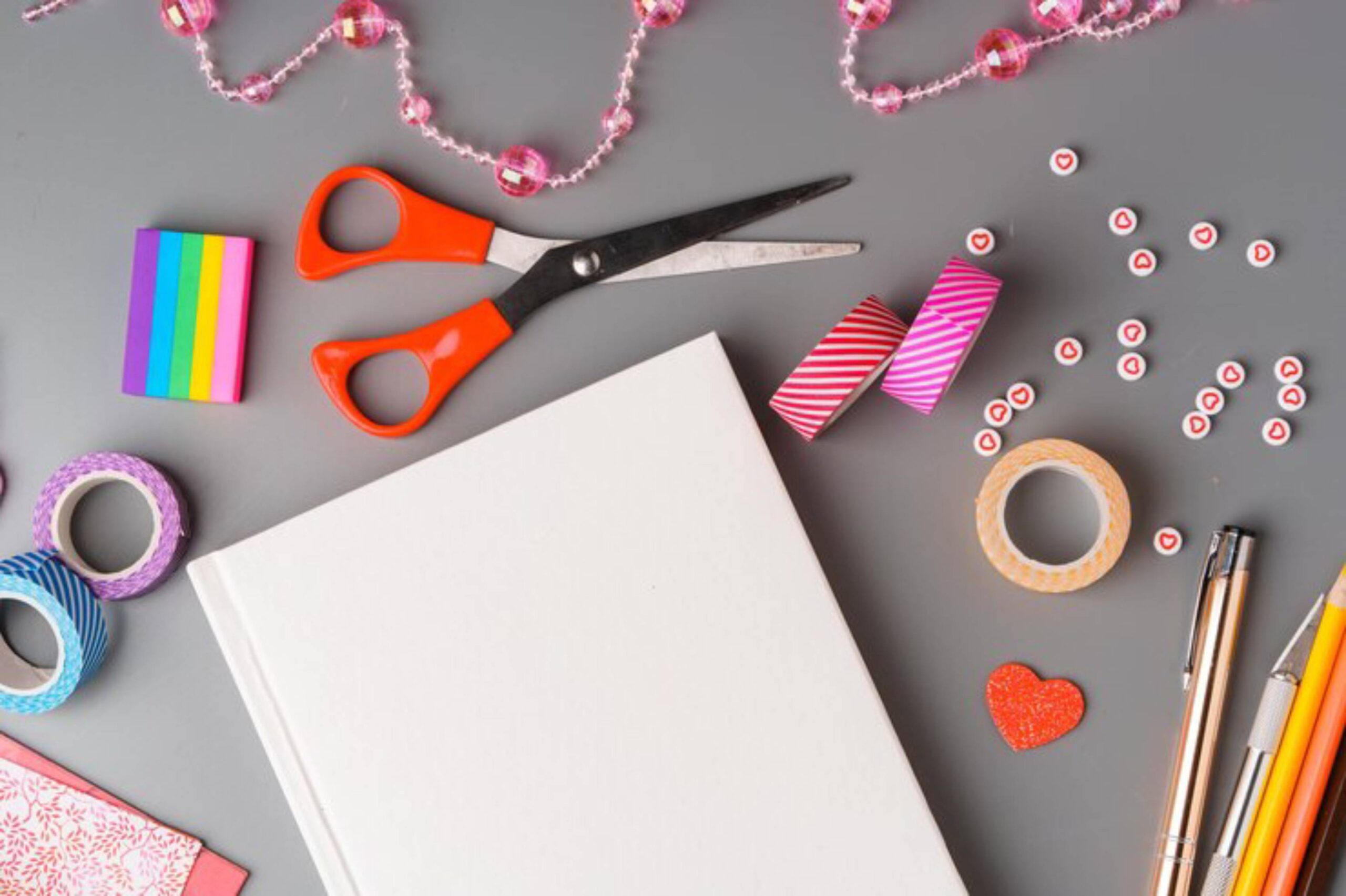
Visual Journaling: Turning Emotions into Art
Not every feeling can be explained with words. Sometimes, your heart holds more than your vocabulary can carry — and trying to name it only makes it heavier. In those moments, colour, texture, and shape become more honest than sentences ever could.
This is the power of visual journaling — a deeply personal form of emotional expression art that allows you to process thoughts, explore feelings, and find healing through imagery. It’s not about being an artist; it’s about letting your emotions speak in a language beyond words.
In this post, you’ll discover what visual journaling is, how it supports therapy through creativity, and practical visual journaling prompts to help you turn raw emotion into meaningful art.
What Is Visual Journaling?
Visual journaling is a creative practice that combines imagery, colour, and mark-making with intentional self-reflection. Think of it as a diary made of paint, sketches, collage, or mixed media — one where your inner world becomes visible.
Unlike traditional journaling, which relies on narrative, visual journaling creates space for non-verbal exploration. You express what you feel, not necessarily what you think — and the process itself becomes a form of self-care.

Common materials:
- Watercolours, markers, or acrylics
- Pens and pencils
- Collage pieces from magazines
- Stamps, stencils, textured paper
- Natural objects (leaves, thread, fabric scraps)
There are no artistic expectations. Only truth, mess, and meaning.
Why Visual Journaling Helps with Emotional Healing
Creating art engages parts of the brain that language doesn’t always reach. This is especially important for trauma, anxiety, grief, or feelings that are hard to articulate. In a world that demands logic and explanation, visual journaling gives you permission to simply feel.
Key emotional benefits:
- Externalises inner tension: Putting emotions on paper reduces overwhelm
- Stimulates the parasympathetic nervous system: Like meditation, art calms the body
- Builds emotional awareness: You begin to notice patterns in colours, shapes, and themes
- Encourages self-compassion: Visualising feelings softens inner judgement
- Connects subconscious material: Imagery can reveal what the conscious mind avoids
Discover how art journaling fosters self-discovery and growth for deeper insight into creative personal transformation.
How Visual Journaling Supports Therapy Through Creativity
Many therapists now integrate visual journaling into treatment plans, especially in art therapy, trauma therapy, and somatic practices.
The visual process offers a way to process and regulate intense emotions that talking alone can’t always soothe.
Clinical benefits:
- Reduces physiological arousal and lowers heart rate, slower breathing
- Increases emotional expression in non-verbal clients
- Aids in trauma integration through visual storytelling
- Strengthens the therapeutic alliance when shared with a counsellor
It’s a safe container for emotions too painful or complex to verbalise — offering healing through symbols, not just words.
Visual Journaling Prompts to Explore Emotions
Not sure where to begin? Use these visual journaling prompts to get started. Let your materials respond — you don’t have to interpret them right away.

1. Draw Your Inner Weather
What does your emotional “forecast” look like today? Stormy? Still? A little unpredictable?
2. Turn a Feeling into a Creature
Choose an emotion (e.g. fear, joy, shame) and imagine it as an animal or being. What shape, colour, or size does it take?
3. Collage Your Current Mood
Tear out images, textures, or colours from magazines that match your emotional state. Let your intuition guide the arrangement.
4. Map a Memory
Use symbols, shapes, and colours to visualize a specific memory. You can choose one that brings joy, regret, or closure.
5. Mirror Page
Look in a mirror for one minute. Then close your eyes and draw how your face feels, not how it looks.
Page Ideas to Build a Visual Journaling Practice
Here are a few themed pages you can incorporate into your journal over time:
- Emotional Landscape: Visual representation of your internal state
- Trigger Tracker: Colour-coded pages showing emotional reactions to events
- Release Pages: Abstract scribbles or colour washes after intense days
- Hope Pages: Symbols of what you want to feel or manifest
- Shadow Pages: Pages where you visualize fears, shame, or grief
Don’t be afraid to layer, scribble, tear, glue, or repaint. The act of creating is often more powerful than the result.
Real-Life Reflections: When Art Spoke Louder Than Words
Amara, 31 – Therapist-in-training. Amara began visual journaling while recovering from burnout. “There were no words for what I felt, just a heavy swirl in my chest. Painting spirals with black acrylic helped me move that feeling out of my body.”
Tariq, 27 – Visual Artist. After losing a friend, Tariq couldn’t talk about it. Instead, he filled a page with waves, stitched lines, and jagged shapes. “The page said what I couldn’t,” he shared. “I didn’t explain it — but I felt lighter.”
These experiences remind us: creative release is emotional release.
Common Blocks (And How to Move Past Them)
| Block | Reframe |
| “I’m not creative enough.” | Everyone is creative. This is for expression, not performance. |
| “I don’t have time.” | 10–15 minutes a few times a week is enough. |
| “It feels silly.” | Feeling silly often means you’re moving past internal resistance. |
| “What if it brings up hard emotions?” | That’s okay. You’re in a safe space. Use calming rituals before and after. |
Give yourself permission to feel without fixing.
Integrating Visual Journaling into Your Wellness Routine
To get the most out of your practice, treat it like emotional hygiene — not just a one-off creative moment.

Sustainable habits:
- Create a journal kit: Keep paints, glue, scissors, pens, and collage bits ready
- Set a timer: Start with 10–20 minutes — enough to bypass the inner critic
- Keep a separate space: A corner or drawer just for your visual journal
- Use music: Let ambient or instrumental music support emotional flow
- Pair with reflection: Occasionally write a few lines after a page — how did it feel?
Pair your visual pages with written pages using free-writing exercises for inner peace.
Conclusion: Let Art Do the Talking
When you don’t have the words — or when words feel like they fall short — visual journaling gives your emotions a voice. Through colour, form, and creative instinct, you begin to see your inner world with honesty and compassion.
This isn’t about making art that’s beautiful. It’s about making art that’s real.
So next time your chest tightens or your heart feels full, grab a pen, brush, or glue stick. Let your hands say what your lips can’t. You may be surprised by what’s waiting to come through the page.
Let the process guide you. Let the art hold you. And most of all — let yourself feel.